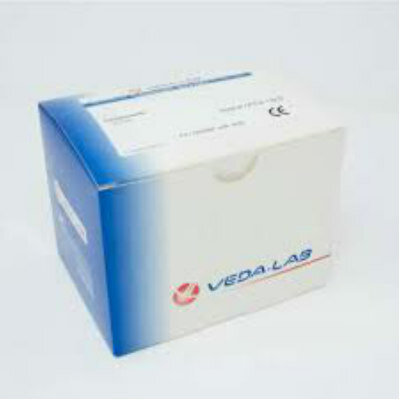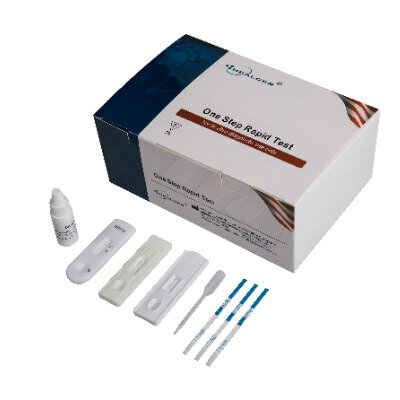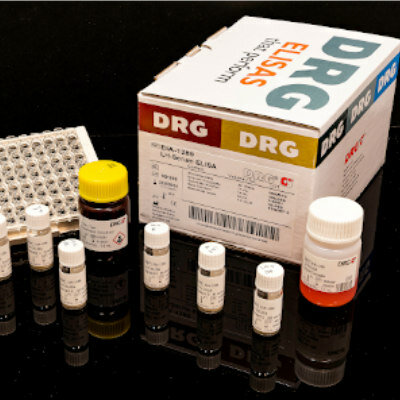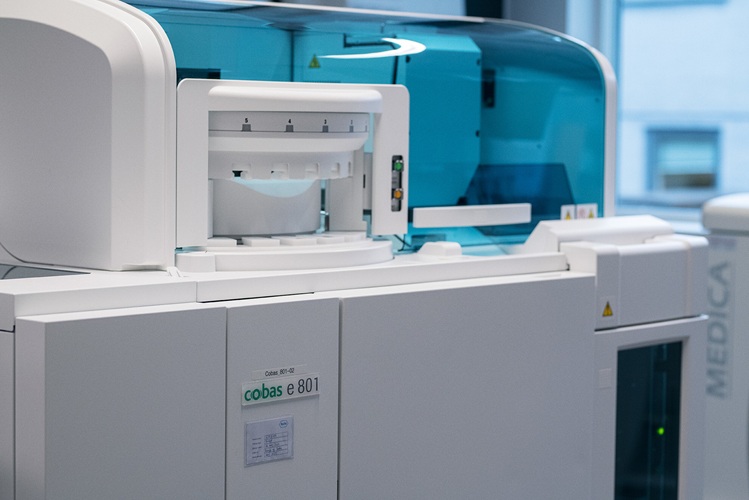Microscopy Innovation Developed to Diagnose Cancer
|
By LabMedica International staff writers Posted on 23 May 2017 |
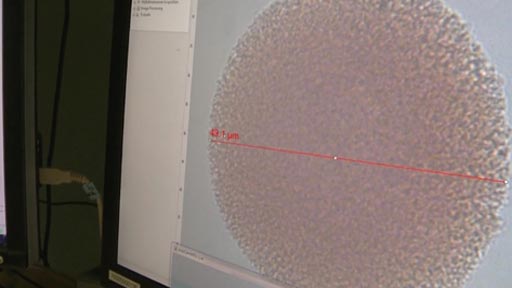
Image: Researchers have devised a new microscopic tool to detect and analyze single melanoma cells that are more representative of the skin cancers developed by most patients (Photo courtesy of the University of Missouri).
Researchers have developed a spectrophotometric technique for microscopic analysis of variations in single cancer cells, enabling more efficient diagnosis of melanomas, including metastasize forms.
For years, melanoma researchers have studied samples that were considered uniform in size and color. But melanomas don’t always come in the same shape and hue; often, melanomas are irregular and dark, making them difficult to investigate.
“Researchers often seek out the types of cancerous cells that are homogenous in nature and are easier to observe with traditional microscopic devices,” said study first author Luis Polo-Parada, associate professor at University of Missouri, “Yet, because the vast amount of research is conducted on one type of cell, it often can lead to misdiagnosis in a clinical setting.”
In their new study, including researchers in Mexico as part of UM’s “Mizzou Advantage” program to foster interdisciplinary collaboration, the team devised a tool to detect and analyze single melanoma cells that are more representative of the skin cancers developed by most patients. They decided to supplement the emerging technique photoacoustic (PA) spectroscopy, a specialized optical technique used to probe tissues and cells non-invasively. Ellison Gordon of UM’s machine shop was involved in the manufacturing of components for the microscope setup.
Current systems use the formation of sound waves followed by the absorption of light, so the tissues must adequately absorb the laser light. This is why most researchers have focused only on consistently hued and shaped melanoma cells. The team modified a microscope that was able to merge light sources at a range conducive to observing the details of single melanoma cells. Using the modified system, they could identify irregularities in human melanoma and breast cancers as well as mouse melanoma cells, enabling them to reach a diagnosis with greater ease and efficiency. The team also noted that as the cancer cells divided, they grew paler in color yet the system was able to detect the newer, smaller cells as well.
“Overall, our studies show that by using modified techniques we will be able to observe non-uniform cancer cells, regardless of their origin,” Prof. Polo-Parada said, “Additionally, as these melanoma cells divide and distribute themselves throughout the blood, they can cause melanomas to metastasize. We were able to observe those cancers as well. This method could help medical doctors and pathologists to detect cancers as they spread, becoming one of the tools in the fight against this fatal disease.”
The study, by Polo-Parada L et al, was published March 13, 2017, in the journal Analyst.
For years, melanoma researchers have studied samples that were considered uniform in size and color. But melanomas don’t always come in the same shape and hue; often, melanomas are irregular and dark, making them difficult to investigate.
“Researchers often seek out the types of cancerous cells that are homogenous in nature and are easier to observe with traditional microscopic devices,” said study first author Luis Polo-Parada, associate professor at University of Missouri, “Yet, because the vast amount of research is conducted on one type of cell, it often can lead to misdiagnosis in a clinical setting.”
In their new study, including researchers in Mexico as part of UM’s “Mizzou Advantage” program to foster interdisciplinary collaboration, the team devised a tool to detect and analyze single melanoma cells that are more representative of the skin cancers developed by most patients. They decided to supplement the emerging technique photoacoustic (PA) spectroscopy, a specialized optical technique used to probe tissues and cells non-invasively. Ellison Gordon of UM’s machine shop was involved in the manufacturing of components for the microscope setup.
Current systems use the formation of sound waves followed by the absorption of light, so the tissues must adequately absorb the laser light. This is why most researchers have focused only on consistently hued and shaped melanoma cells. The team modified a microscope that was able to merge light sources at a range conducive to observing the details of single melanoma cells. Using the modified system, they could identify irregularities in human melanoma and breast cancers as well as mouse melanoma cells, enabling them to reach a diagnosis with greater ease and efficiency. The team also noted that as the cancer cells divided, they grew paler in color yet the system was able to detect the newer, smaller cells as well.
“Overall, our studies show that by using modified techniques we will be able to observe non-uniform cancer cells, regardless of their origin,” Prof. Polo-Parada said, “Additionally, as these melanoma cells divide and distribute themselves throughout the blood, they can cause melanomas to metastasize. We were able to observe those cancers as well. This method could help medical doctors and pathologists to detect cancers as they spread, becoming one of the tools in the fight against this fatal disease.”
The study, by Polo-Parada L et al, was published March 13, 2017, in the journal Analyst.
Latest Pathology News
- Groundbreaking Chest Pain Triage Algorithm to Transform Cardiac Care
- AI-Based Liquid Biopsy Approach to Revolutionize Brain Cancer Detection
- AI-Driven Analysis of Digital Pathology Images to Improve Pediatric Sarcoma Subtyping
- AI-Based Model Predicts Kidney Cancer Therapy Response
- Sensitive and Specific DUB Enzyme Assay Kits Require Minimal Setup Without Substrate Preparation
- World’s First AI Model for Thyroid Cancer Diagnosis Achieves Over 90% Accuracy
- Breakthrough Diagnostic Approach to Significantly Improve TB Detection
- Rapid, Ultra-Sensitive, PCR-Free Detection Method Makes Genetic Analysis More Accessible
- Spit Test More Accurate at Identifying Future Prostate Cancer Risk
- DNA Nanotechnology Boosts Sensitivity of Test Strips
- Novel UV and Machine Learning-Aided Method Detects Microbial Contamination in Cell Cultures
- New Error-Corrected Method to Help Detect Cancer from Blood Samples Alone
- "Metal Detector" Algorithm Hunts Down Vulnerable Tumors
- Novel Technique Uses ‘Sugar’ Signatures to Identify and Classify Pancreatic Cancer Cell Subtypes
- Advanced Imaging Reveals Mechanisms Causing Autoimmune Disease
- AI Model Effectively Predicts Patient Outcomes in Common Lung Cancer Type
Channels
Clinical Chemistry
view channel
AI-Powered Blood Test Accurately Detects Ovarian Cancer
Ovarian cancer ranks as the fifth leading cause of cancer-related deaths in women, largely due to late-stage diagnoses. Although over 90% of women exhibit symptoms in Stage I, only 20% are diagnosed in... Read more
Automated Decentralized cfDNA NGS Assay Identifies Alterations in Advanced Solid Tumors
Current circulating cell-free DNA (cfDNA) assays are typically centralized, requiring specialized handling and transportation of samples. Introducing a flexible, decentralized sequencing system at the... Read more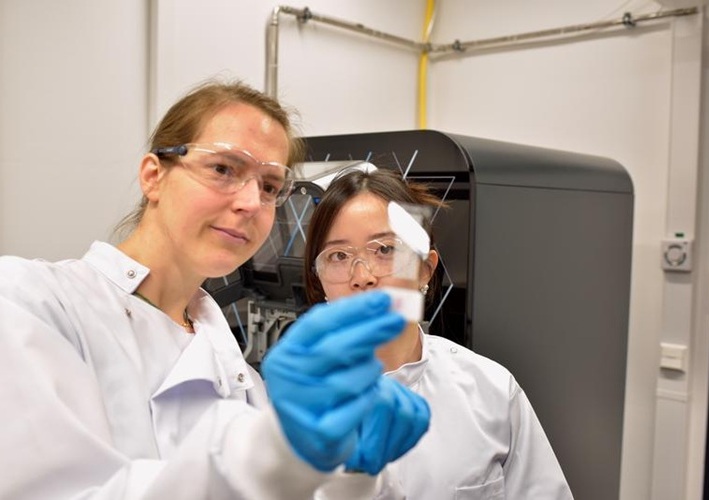
Mass Spectrometry Detects Bacteria Without Time-Consuming Isolation and Multiplication
Speed and accuracy are essential when diagnosing diseases. Traditionally, diagnosing bacterial infections involves the labor-intensive process of isolating pathogens and cultivating bacterial cultures,... Read more
First Comprehensive Syphilis Test to Definitively Diagnose Active Infection In 10 Minutes
In the United States, syphilis cases have surged by nearly 80% from 2018 to 2023, with 209,253 cases recorded in the most recent year of data. Syphilis, which can be transmitted sexually or from mother... Read moreMolecular Diagnostics
view channel
POC Diagnostic Platform Combines Immunoassay and Molecular Testing
An innovative diagnostic platform offers superior sensitivity across all sample types, including blood, compared to existing rapid tests, while maintaining a low-cost, user-friendly design.... Read more
Single Blood Test Could Detect Different Types of Cancer at Early Stages
Currently, reliable screening for only a few types of cancer is available, such as those affecting the breast, bowel, cervix (neck of the womb), and lung for individuals at high risk. While these screenings... Read moreHematology
view channel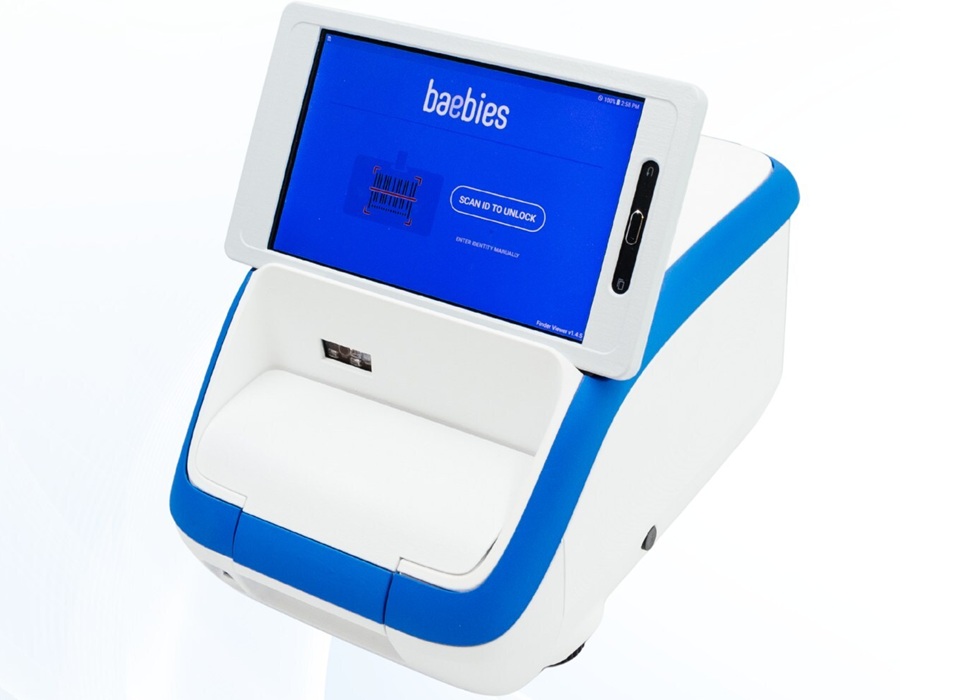
First Point-of-Care Heparin Monitoring Test Provides Results in Under 15 Minutes
Heparin dosing requires careful management to avoid both bleeding and clotting complications. In high-risk situations like extracorporeal membrane oxygenation (ECMO), mortality rates can reach about 50%,... Read more
New Scoring System Predicts Risk of Developing Cancer from Common Blood Disorder
Clonal cytopenia of undetermined significance (CCUS) is a blood disorder commonly found in older adults, characterized by mutations in blood cells and a low blood count, but without any obvious cause or... Read moreImmunology
view channel
Stem Cell Test Predicts Treatment Outcome for Patients with Platinum-Resistant Ovarian Cancer
Epithelial ovarian cancer frequently responds to chemotherapy initially, but eventually, the tumor develops resistance to the therapy, leading to regrowth. This resistance is partially due to the activation... Read more
Machine Learning-Enabled Blood Test Predicts Immunotherapy Response in Lymphoma Patients
Chimeric antigen receptor (CAR) T-cell therapy has emerged as one of the most promising recent developments in the treatment of blood cancers. However, over half of non-Hodgkin lymphoma (NHL) patients... Read moreMicrobiology
view channel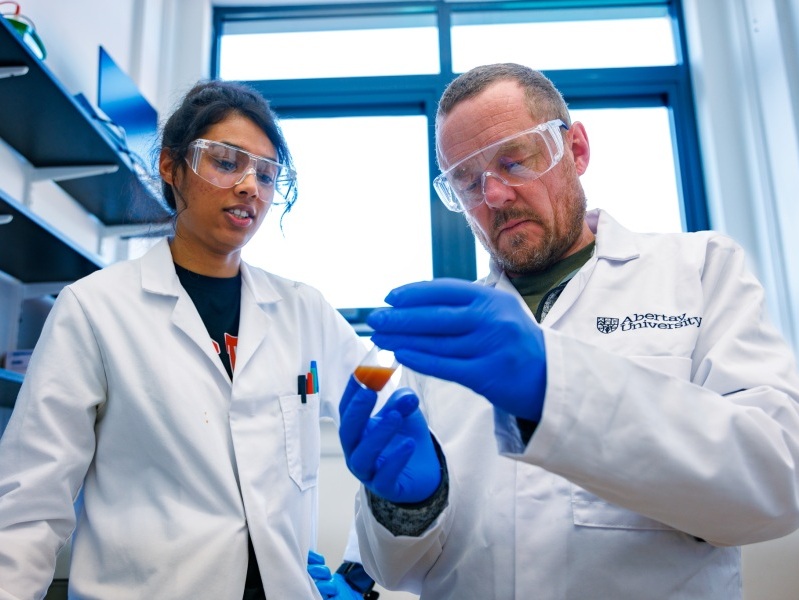
New Blood Test Detects Up to Five Infectious Diseases at POC
Researchers have developed a prototype flow-through assay capable of detecting up to five different infections, with results that can be quickly analyzed and transmitted via a specialized smartphone app.... Read more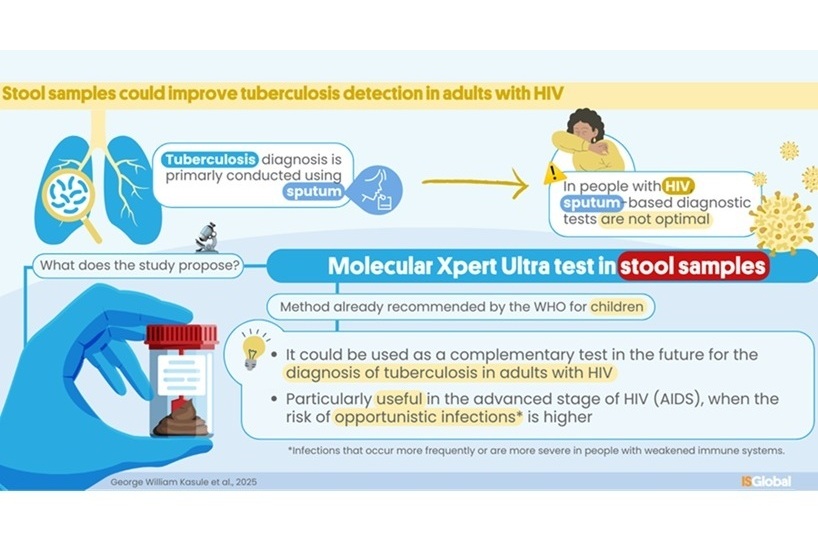
Molecular Stool Test Shows Potential for Diagnosing TB in Adults with HIV
Tuberculosis (TB), caused by the bacterium Mycobacterium tuberculosis, led to 1.25 million deaths in 2023, with 13% of those occurring in people living with HIV. The current primary diagnostic method for... Read moreTechnology
view channel
Advanced Predictive Algorithms Identify Patients Having Undiagnosed Cancer
Two newly developed advanced predictive algorithms leverage a person’s health conditions and basic blood test results to accurately predict the likelihood of having an undiagnosed cancer, including ch... Read more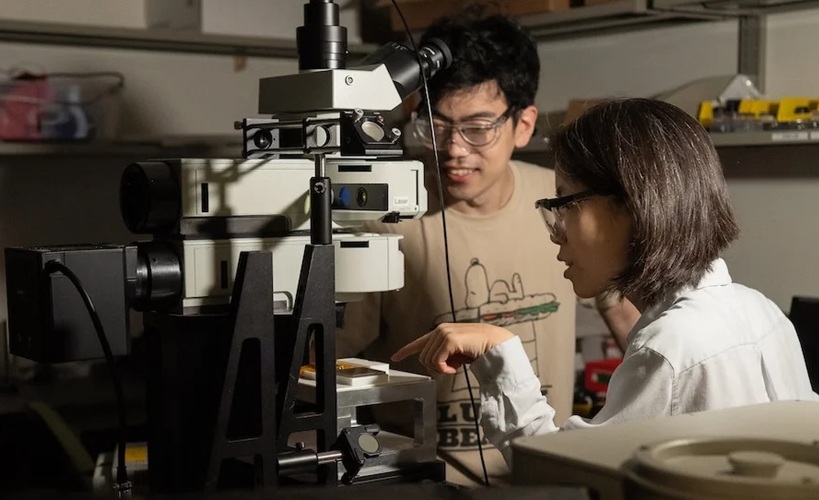
Light Signature Algorithm to Enable Faster and More Precise Medical Diagnoses
Every material or molecule interacts with light in a unique way, creating a distinct pattern, much like a fingerprint. Optical spectroscopy, which involves shining a laser on a material and observing how... Read more
Disposable Microchip Technology Could Selectively Detect HIV in Whole Blood Samples
As of the end of 2023, approximately 40 million people globally were living with HIV, and around 630,000 individuals died from AIDS-related illnesses that same year. Despite a substantial decline in deaths... Read more
Pain-On-A-Chip Microfluidic Device Determines Types of Chronic Pain from Blood Samples
Chronic pain is a widespread condition that remains difficult to manage, and existing clinical methods for its treatment rely largely on self-reporting, which can be subjective and especially problematic... Read moreIndustry
view channel
Qiagen Acquires NGS Analysis Software Company Genoox
QIAGEN (Venlo, the Netherlands) has signed a definitive agreement to acquire Genoox (Tel Aviv, Israel), a provider of artificial intelligence (AI)-powered software that enables clinical labs to scale and... Read more
Cepheid and Oxford Nanopore Technologies Partner on Advancing Automated Sequencing-Based Solutions
Cepheid (Sunnyvale, CA, USA), a leading molecular diagnostics company, and Oxford Nanopore Technologies (Oxford, UK), the company behind a new generation of sequencing-based molecular analysis technologies,... Read more
Grifols and Tecan’s IBL Collaborate on Advanced Biomarker Panels
Grifols (Barcelona, Spain), one of the world’s leading producers of plasma-derived medicines and innovative diagnostic solutions, is expanding its offer in clinical diagnostics through a strategic partnership... Read more




